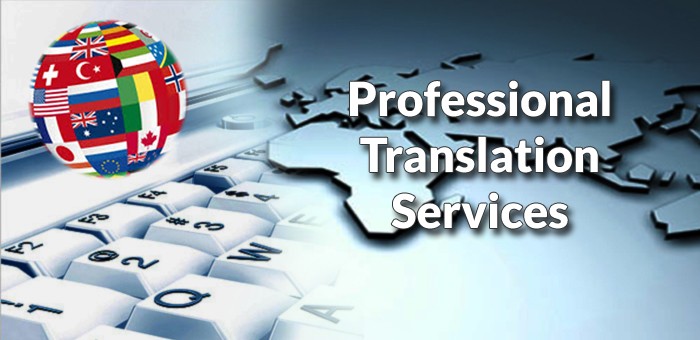Translate Auto Specs Right with Professional Services

Automotive companies are expanding fast across borders, time zones, and languages. But when it comes to translating technical content like vehicle specifications, manuals, or service guides, accuracy is everything. A small mistake can lead to safety issues, regulatory problems, or a ruined user experience.
That’s where professional automotive translation services step in. In this blog, we’ll explore why getting auto specs right is non-negotiable, how expert translation can support your growth, and what to look for in a trusted language services provider.
Why Translating Auto Specs Needs Precision
Vehicle specs are full of technical terms. Torque ratings, engine dimensions, software features, and safety standards vary by market. If something gets lost—or mistranslated—the consequences can be serious.
Take, for example, the case of Mitsubishi in the early 2000s. Their Pajero model faced embarrassment in Spanish-speaking markets because the name “Pajero” translates into an offensive slang word. That may not be a spec error, but it shows how language missteps can harm a brand. Now, imagine if a torque spec in a maintenance manual was wrong. It could lead to real-world danger and costly liabilities.
When you’re launching a car in Germany, Brazil, or South Korea, you need every spec, label, and technical doc to reflect local expectations and language norms. That’s why translation here isn’t about words—it’s about engineering accuracy, compliance, and user safety.
Real-World Example: Ford’s Success with Localized Specs
Ford Motor Company offers a good example. When launching its Mustang in Germany, Ford worked with a language services provider to ensure all user manuals and marketing materials were not only translated but culturally adapted. Technical translators worked alongside engineers to translate specs related to emissions, measurements (like converting miles to kilometers), and parts compatibility.
By using professional automotive translation services, Ford avoided costly mistakes and improved customer trust. German buyers appreciated the clarity in documentation, which contributed to strong sales in the region.
What Do Professional Automotive Translation Services Include?
If you’re picturing someone just translating a PDF from English to Spanish, think again. The process is far more advanced and involves:
- Terminology management: Ensures consistent use of industry-specific terms.
- Translation memory tools: Speeds up the process and maintains accuracy over time.
- Multilingual DTP (Desktop Publishing): Keeps layout intact when languages expand or shrink text.
- Review by subject matter experts: Engineers or auto tech specialists review for accuracy.
- Compliance checks: Ensures translated content meets local regulatory standards.
When you hire a professional team, you’re not just getting language skills—you’re getting a workflow that respects your brand, your product, and your customers.
Case Study: Bosch and Its Multilingual Repair Manuals
Bosch, a global automotive parts manufacturer, faced a challenge. It needed to distribute repair manuals across Europe, Asia, and Latin America. Instead of using basic translation tools, Bosch partnered with a language services provider that specialized in automotive content.
The provider used translation memory and termbase management to streamline hundreds of manuals in over 20 languages. Not only did this reduce translation costs by 30%, but it also improved consistency in key areas like part numbers, torque settings, and safety instructions.
Bosch technicians worldwide could now rely on the same information, no matter the language. This move cut down on maintenance errors and boosted service efficiency.
Common Mistakes to Avoid with Auto Spec Translation
Even big companies sometimes cut corners. Here’s what to avoid:
- Using general translators: Auto specs require domain knowledge. Don’t use someone unfamiliar with automotive terms.
- Ignoring localization: A translated spec isn’t enough. You need to adjust units (e.g., gallons to liters), standards, and formats.
- Skipping review steps: A single-pass translation without expert review can lead to costly oversights.
- No translation memory: If every doc is done from scratch, you lose consistency and spend more.
Working with a seasoned language services provider prevents these pitfalls.
How It Affects Sales, Safety, and Support
Let’s break this down into real business impact:
- Sales: Clear, localized specs help dealerships close sales faster. Customers understand what they’re buying.
- Safety: Accurate translations prevent errors in assembly, repair, and usage.
- Support: Your service teams can offer better help when documentation is consistent across languages.
Even your warranty and insurance coverage can be affected by translation quality. In the U.S., one auto parts supplier faced a lawsuit after a poorly translated manual led to improper installation. The company lost the case and spent millions in legal costs—an expense that could’ve been avoided with professional support.
Choosing the Right Language Services Provider
Not all providers are created equal. Here’s what to look for:
- Automotive specialization: Ask for their experience in translating automotive specs, manuals, and labels.
- Technical linguists: Make sure their translators understand automotive engineering.
- Regulatory knowledge: Especially if you’re selling in regions like the EU or Japan.
- QA and testing processes: Look for providers who test and review translations thoroughly.
- Scalability: As your product range grows, so should your translation support.
A great provider should feel like an extension of your team—not just a vendor.
Final Thoughts
In today’s global auto market, translation isn’t just a task—it’s a competitive advantage. Specs, manuals, software interfaces, and safety docs need expert handling. By working with professional automotive translation services, you protect your customers, your brand, and your bottom line.



